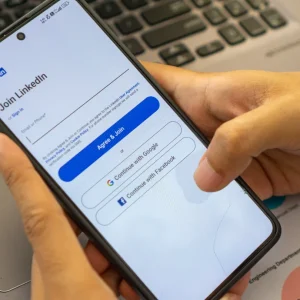
With billions of gigabytes of data being generated every day, businesses are becoming increasingly plagued by the question of how to make use of it.
From external, unstructured data derived from sources like social media to internal data like customer feedback, businesses have become better at storing (or hoarding) vast quantities of information.
But when it comes to analysing it, some feel a bit stuck.
Analytics has long been the domain of business intelligence specialists, but as marketing, creative and even HR teams figure out the value data unlocks, all of them want a piece of it.
However, with average salaries topping $100,000 according to career database Glassdoor, data scientists aren’t exactly an inexpensive resource.
This conundrum has contributed to the rise of visual analytics – a business intelligence tool designed for business users, rather than people with computer science degrees.
Analytics – not just for the experts
The idea, as Tableau’s vice president for EMEA, James Eiloart, tells CBR, is to make data as accessible to the layman as it is to the scientist.
"We have lots and lots of users here from IT departments and very advanced users of data and analytics who love the fact they can answer questions from internal clients in a heartbeat," he says. "Equally you’ll find users who have very limited or no technical skills at all but who understand the data because it’s their data.
"The technology disappears and they start exploring and playing with the data."
This is where traditional business intelligence tools have fallen short, he contends. "[They lack] this self-service BI that is business people themselves being able to answer their own questions and share their data. That’s particularly relevant where the data is changing reasonably fast."
Tableau’s tool will sit on top of your data – be it an Excel spreadsheet or an Oracle database – and let you identify trends and gain insights by displaying the data in an attractive and simple manner.
And customers like it, too. Eiloart refers to Vodafone Holland, which used Tableau to look into how different offers being made by call centre agents were being taken up by customers.
"Within minutes they identified one individual frequently making high value offers and virtually always having them accepted," Eiloart says. "Instantly they said this drives our profitability, this guy is the expert at it, there’s a whole pile of people who’ve never offered [it], and others who don’t get it accepted. How do we take what he’s doing and empower everyone else with it?"
Another customer is The Wellcome Trust Sanger Institute, a British research centre dedicated to understanding the role of genetics in health and disease, and part of the Human Genome Project.
A dozen different teams use Tableau to track DNA samples, to analyse experimental data and to report on back-office IT systems.
And senior software developer Matt Francis said it has allowed team managers to explore the data themselves, without a lengthy delay by referring it to the IT team – also resulting in fewer demands on IT.
"The beauty of Tableau is you can always get to the underlying data behind a chart – unlike a static display," he explains. "That means you can drill down into what the problem is, without asking someone else. Managers of the teams can do their own diagnoses of any problems.
"What it does is allows you to spend more time on the problems that are causing you grief. With Tableau you find the bad stuff more quickly. That’s a real benefit."
Data presentation
However, it is not yet using Tableau’s latest feature, Story Points. This technology allows users to assemble dashboards and charts into an interactive presentation that Tableau claims is more fully featured than Microsoft’s PowerPoint.
It is here that purely visual analytics tools like Tableau and Qlik appear to have the jump on their BI rivals.
Analytics giant SAS is firmly integrated with PowerPoint, and proud of it.
Cloud product manager Robby Powell says: "Why create a new environment for the presentation of data when Microsoft PowerPoint is a standard environment that businesses use?"
The US-based International Institute for Analytics, founded in 2010 to monitor analytics technology, believes that these older players have fallen behind younger upstarts in the visual analytics space.
CEO Jack Phillips says: "There’s no question that a couple of firms who focus exclusively [on visual analytics] that have jumped out ahead because of this trend everybody has been commenting on, purchasing this visual software outside or around IT.
"I think SAS missed a beat."
But Tableau’s strength in visual analytics may be negated by a lack of integration with other BI vendors like SAS that, while perhaps lacking the visual element, offer more extensive capabilities to evaluate data.
IDC analyst Alys Woodward says Tableau must concentrate on remedying this, if it wants to be able to offer customers insight into all their data sources.
"Customers with mature BI landscapes often have a challenge to fit Tableau into those landscapes," she contends. "Although Tableau as a technology can fit on top of governed information just as it can onto ungoverned information, the purpose of a governed landscape is to ensure that people take decisions based on reliable data.
"Organizations have a learning curve to go through around how they integrate new data sources, such as open data, social data and others into their enterprise decision-making systems
"For Tableau, the next opportunity is to integrate with semantic layers from other vendors tools so that insights gained from data discovery processes don’t remain in silos, but become part of enterprise decision-making systems."
But the question is whether they will have the opportunity to integrate with many of these vendors. As much as SAS is behind in the VA space, it is focused on catching up.
It has just released Visual Analytics 7.1, which boasts a variety of features which it says go beyond the capabilities of the more business user-friendly Tableau and Qlik.
BI product manager Powell says: "Our customers can go all the way from report designing and distribution to data exploration to advanced analytics, all in one application."
New features include goal seeking, where customers can set a goal – such as a certain amount of revenue – and then watch as the tool adjusts the performance of all contributing factors to where they would need to be to achieve it.
Additionally, there is text sentiment analysis, where comments on social media are not only collected and analysed but also contextualised, with the tool deciding if the comment was positive, negative or neutral.
Also, if users know they are increasing their sales force, the tool will predict the impact of that on business operations.
So while the International Institute for Analytics’ Phillips believes SAS is behind Tableau and others, he does not think that will remain the case.
However, it is worth noting that the Institute accepted SAS ‘s offer of space in Las Vegas for the Institute to hold its own annual conference just before SAS Premier Business Leadership Series took place last week.
Nevertheless, he says: "The firms who have been at this for a while have a much stronger long term position. This [VA] trend will flatten and potentially come down a bit as overall, firms’ skills get more enhanced and they start asking for more and more.
"There’s a longer term war here. Those players that have the broader capabilities and have visualisation as well, they will win out over time."
And according to SAS, it is not just data scientists using its visual analytics tool.
CEO Jim Goodnight tells CBR that it has expanded into that sphere particularly to target business users.
"That’s one of the reasons we wanted to do it, to make it more accessible," he claims. "We’ve got visual statistics now available that allow you to do a lot of the massively parallel computations and modelling work we do – you can do that now using visual analytics."
This appears to be reflected by customers.
US food delivery company FreshDirect’s analytics, marketing and operations VP Aaron Cano picked SAS’s VA tool over others because of its more extensive capabilities.
"Tableau is just the picture on the front end. Analytics is not reporting. There’s so many tools out there that do reporting, and it doesn’t really matter which one, but they’re not analytic tools," he claims.
"You can’t go in there and look at lifetime value, or you can but it’ll take you four hours. SAS gives you the ability to come up with a question and go right to it and answer it."
But outside of having experts to do the "hardcore modelling" work, Cano thinks of data as something everyone should be able to use.
"I’d rather not have specialists," he explains. "I really believe that analysts are all over an organisation, in finance, in transportation, and I want the information, the tools, to go all over. There’s a community aspect of analytics that I’m a big believer in."
The future
Visual analytics is an emerging market, and one that will only grow thanks to the explosion of data we are witnessing at the moment.
For smaller players, a big benefit is that the space is not dominated by big companies that have already divided up the turf between them.
But as those older analytics firms bring their experience and expertise to bear on this new area, companies with more lightweight tools risk being sidelined.
However, while the data analysis needs of a small business and a large enterprise may often be similar, visual tools aimed at SMBs will still remain relevant while they can still compete on cost.
As the International Institute for Analytics’ CEO, Jack Phillips, says earlier – there is a longer-term war to wage here.






